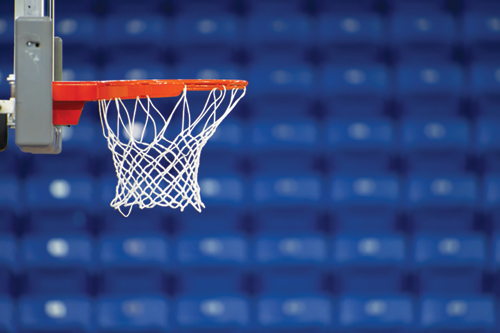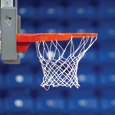
This past spring, students and I attended a basketball game as fans. Despite the good crowd, most attending students were tapping away on their phones and seemed to be there for social reasons rather than to cheer on their team. At the next game, we fielded a small pep band of 16 students, and the atmosphere was electric. Almost everyone in that small gym became involved in the game. The band made a noticeable difference that was recognized by students, coaches, and community members. Visitors from other schools lamented expressed envy for our game atmosphere. In just three months, and with relatively little effort and cost, we were transformed into a high-energy band that helped our teams get to the West Virginia Intercollegiate Athletic Conference Tournament semifinals.
Smaller schools (and many larger ones) struggle under the financial strain and find it difficult to develop athletic band programs. There are several cost-saving measures to help develop your program, even with a small budget. The music director, as well as music education or composition students, can make arrangements of popular tunes for the ensemble. This allows the music to adjust for unbalanced ensembles and emphasize particular strengths. If your program does not have marching instruments and students worry about taking expensive personal instruments into the arena, consider using methods courses instruments. Some stores may also rent equipment or you could borrow some from another program. If you do not have marching percussion, many programs use a drum set for their pep band. However, we have found our fans love having a drumline that can produce more volume and energy.
Many colleges provide course credit for participation in pep band, and professors can consider offering variable credit to offer more flexibility. This can also provide appropriate payment if run by a professor. Many pep bands are student-run, a potential cost saver.
Another problem faced by small schools is a tiny pool of potential musicians. If you have greater interest in one of the other ensembles, require students who want to be in that group to participate in pep band as well. Most small schools have smaller arenas or gyms, so even a well-balanced group of 16 players works great.
Many college students will work for small perks. Our athletic program provides five pizzas before the game and free drinks during the game to band members. Never underestimate the power of free food for a college student. We also provide students with stylish, athletic-style shirts to wear during the games. Students keep the shirts, and directors have cited this an important incentive.
Unfortunately, many directors face unsupportive administrators. Collecting data from other programs, both comparable and larger in size, can help bolster your case. Be flexible and patient with administrators. Know what you want and be prepared with many solutions to problems. The more you bend, the more you can ask for in the future.
It may be difficult in many places, but consider offering some financial assistance to pep band members. When you give scholarships, stipulate that they must participate in pep band. Some schools maybe be able to offer bookstore vouchers, flex dollars to use at a food court, or cash. I am able to pay my students a flat rate for the season through our admissions department. I have made the case that it helps with music and athletic recruitment and retention.
Beyond any monetary incentives, students feel greater motivation to attend games when their efforts are appreciated. I saw a 180 degree turn in my students’ attitudes about pep band after a five-minute visit from the basketball coaches to a band rehearsal. They simply thanked the band for bringing so much energy to games. Band members often feel overshadowed and unappreciated by athletic programs, but after my students heard from the coaches, they played better and were enthusiastic on every play. The athletes commented that the band made the crowd seem even bigger and more excited.
Selling the virtues of a pep band program to administrators can take some additional arguments. Pep bands can be used to recruit high school musicians. Athletic bands add visibility in the community. We performed at the playoffs once and a fan from another team came by and said, “I wish we had a band like yours.” If local students and directors see your band, they will become more interested in the program.
A pep band also helps with athletic recruiting. We had several recruits attend a game at which we performed, and one said they were amazed by the energy in our small gym, comparing it to a Division I atmosphere. Many students at small colleges come from small high schools, and some visiting recruits said they were so happy to see the band at athletic events other than football games.
As you build up a pep band, pay attention to developing a strong reputation with the public. Students should have some type of uniform. Matching shirts and pants look sharp in the stands. Black pants are easiest to match, but khakis and jeans could also work. A key to good visuals is having the group standing and organized in the stands. A band that is half-standing, in no particular set-up, appears sloppy and unprofessional. Consider the adage: they see us before they hear us.
Most schools have cheerleaders, and it is important to develop a productive working relationship with this organization. Coordinate your efforts with the cheerleading coach and student leaders. We list the order of songs and cheers for timeouts (30 second and 75 second) so there is no confusion. Send a CD of your pep band songs to the coach so they can choreograph dances to the songs. The student government and activity council are also useful partners. They can create a vibrant student section and even distribute shirts for students to wear.
Once you have developed your program, continue to build and maintain good working relationships with coaches and administrators. Be active in the athletic department; if there is a campus-wide committee, try to be on it. These relationships will help to develop a pep band that plays well and creates a vibrant game atmosphere.





